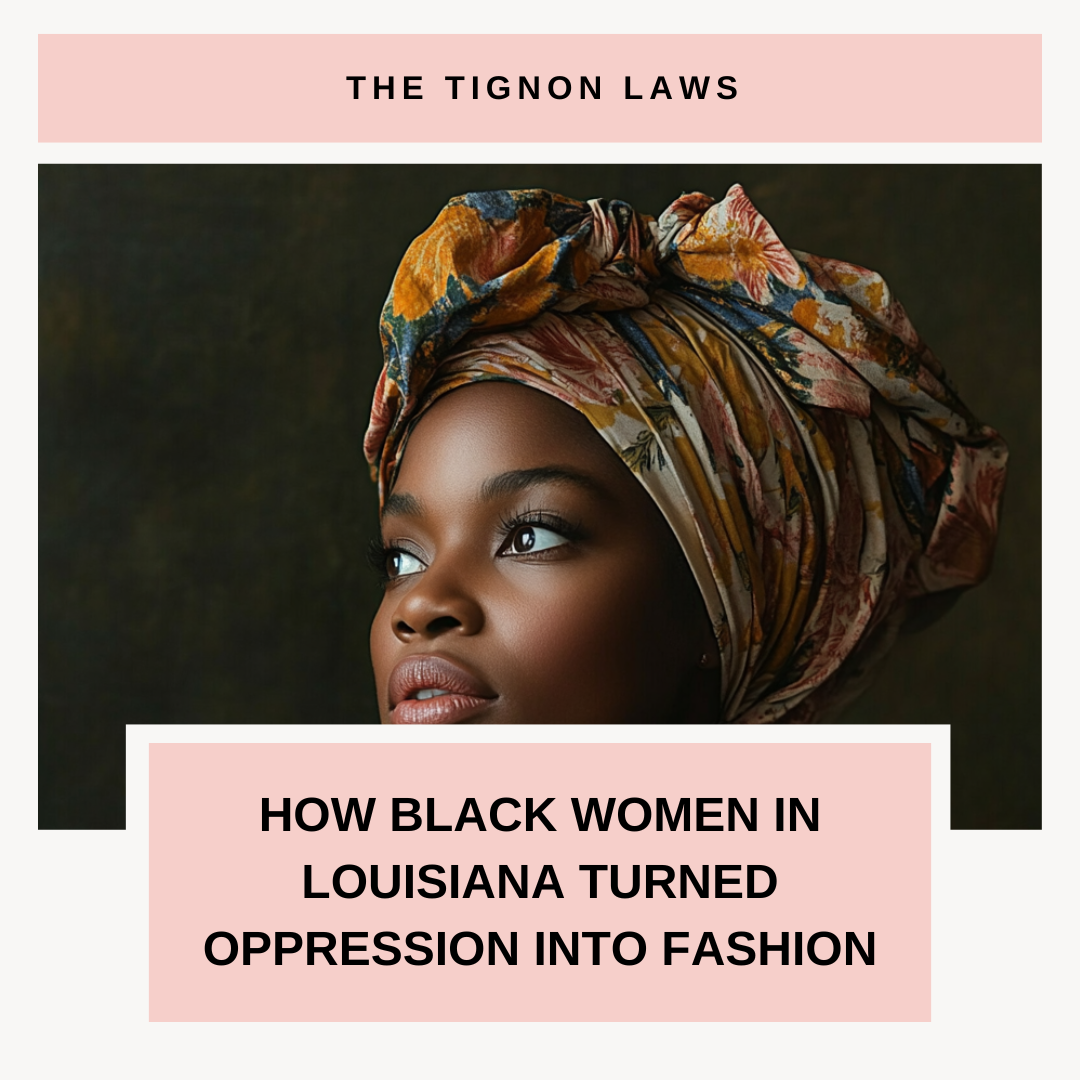The Tignon Laws: How Black Women in Louisiana Turned Oppression into Fashion
A Story of Resistance, Creativity, and Cultural Pride, Reflected in Headwraps Today
In 1786, Louisiana Governor Esteban Miró enacted a series of laws known as the Tignon Laws. These laws aimed to control the growing influence and perceived "extravagance" of free women of color in New Orleans by requiring them to cover their hair with a tignon, or headwrap. But what began as an attempt to suppress Black women's beauty and self-expression ultimately backfired, leading to a powerful display of resilience and creativity that continues to inspire headwrap styles today.
The Tignon Laws: A Tool of Oppression in Louisiana History
Governor Miró intended the Tignon Laws to enforce modesty and reinforce social hierarchies in colonial Louisiana. Free women of color, many of whom were of African descent and had achieved a degree of economic independence, were seen as a threat to the established social order. Their elaborate hairstyles and attire, influenced by their rich cultural heritage, were perceived as a challenge to the norms of European society.
The Tignon Laws mandated that women of African descent wear head coverings in public, supposedly to distinguish them from white women and limit their perceived attractiveness. This was a blatant act of oppression, attempting to restrict their social mobility and reinforce their subordinate status within Louisiana's complex social structure.
Turning Oppression into Art: The Rise of Headwrap Styles
However, Black women in Louisiana refused to be defined by these oppressive laws. Instead of conforming to the expectations of modesty and subservience, they transformed their tignons into stunning works of art, showcasing their Black excellence. They used luxurious fabrics, intricate wrapping techniques, and bold embellishments to create headwraps that were both beautiful and defiant.
These women embraced the tignon as a symbol of their cultural identity and creativity. They incorporated elements of African fashion and Caribbean aesthetics into their headwrap styles, creating a unique and powerful fashion statement. The tignon became a symbol of resistance, a way for Black women to assert their presence and challenge the limitations imposed upon them. This spirit of resistance is a key part of Black Culture and Women's History.
The Legacy of the Tignon Laws: Black Girl Magic and Headwrap Tutorials
The Tignon Laws were eventually repealed, but their legacy lives on. The tradition of elaborate headwrapping continued among Black women in Louisiana and beyond, evolving into the diverse and vibrant headwrap styles we see at Cee Cee's Closet NYC today.
Just like the women of 1786, Cee Cee's Closet NYC offers a wide array of headwraps that allow you to express your unique style and heritage. From our vibrant Ankara prints to our luxurious silk turbans, we have a headwrap for every occasion.
Check out some of our best-selling headwraps:
- The Bisa Headwrap: Channel your inner royalty with this elegant and sophisticated turban.
- The Liandra Silk Scarf: Celebrate African heritage with this beautifully patterned headwrap featuring Adinkra symbols.
- The Ahaba Shortie Headwrap: Embrace bold style and cultural pride with this statement headwrap.
The story of the Tignon Laws is a testament to the resilience and creativity of Black women in the face of adversity. It's a reminder that even in the darkest of times, beauty and self-expression can flourish. It's a story of Black Girl Magic and the enduring power of cultural pride.
Want to learn how to create your own stunning headwrap styles? Check out our headwrap tutorials on the Cee Cee's Closet NYC YouTube channel!
Embrace the Legacy
Next time you wrap your hair, remember the bold spirit of the women who turned oppression into art. Their legacy lives on in every fold and twist of our modern headwraps.



